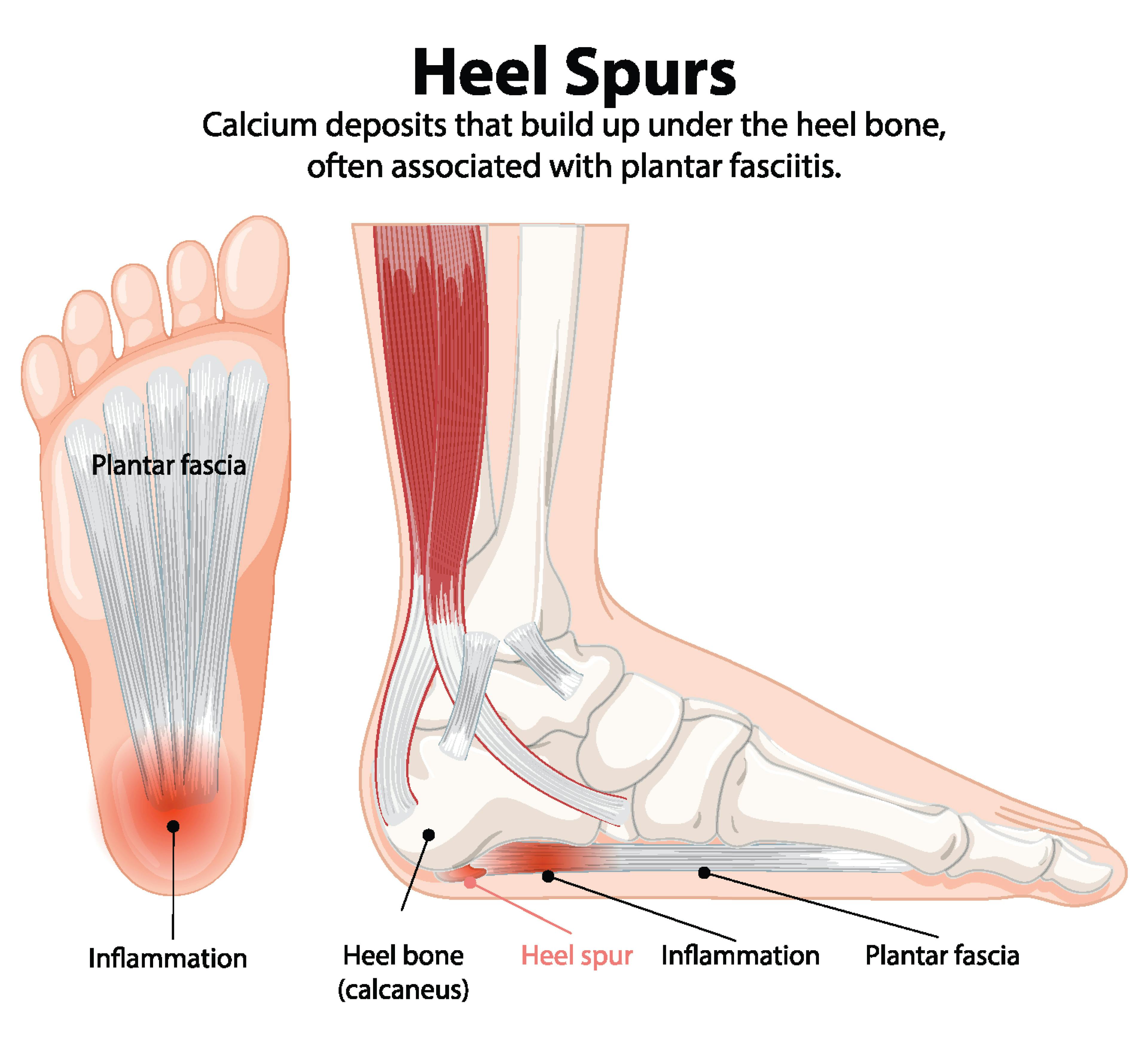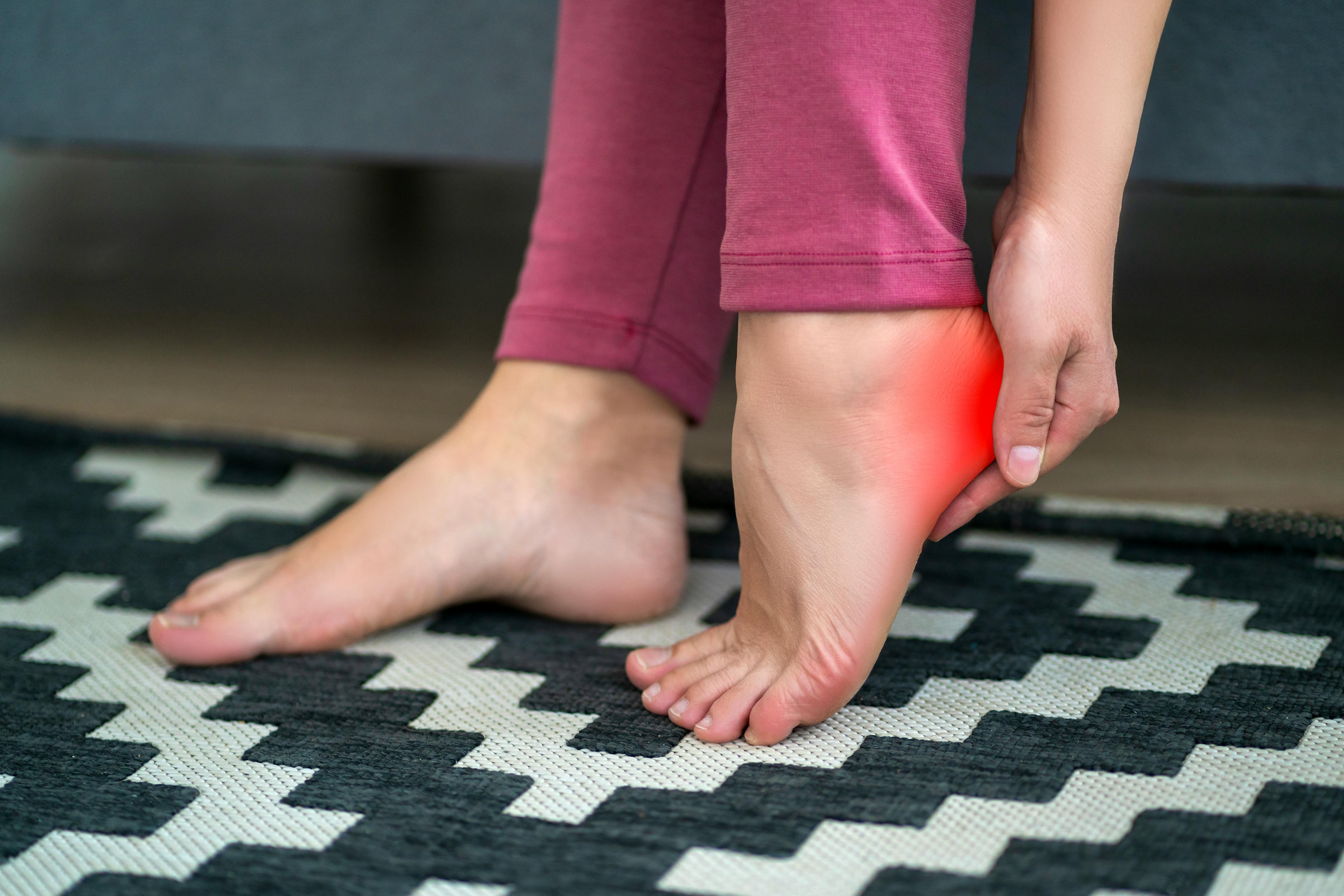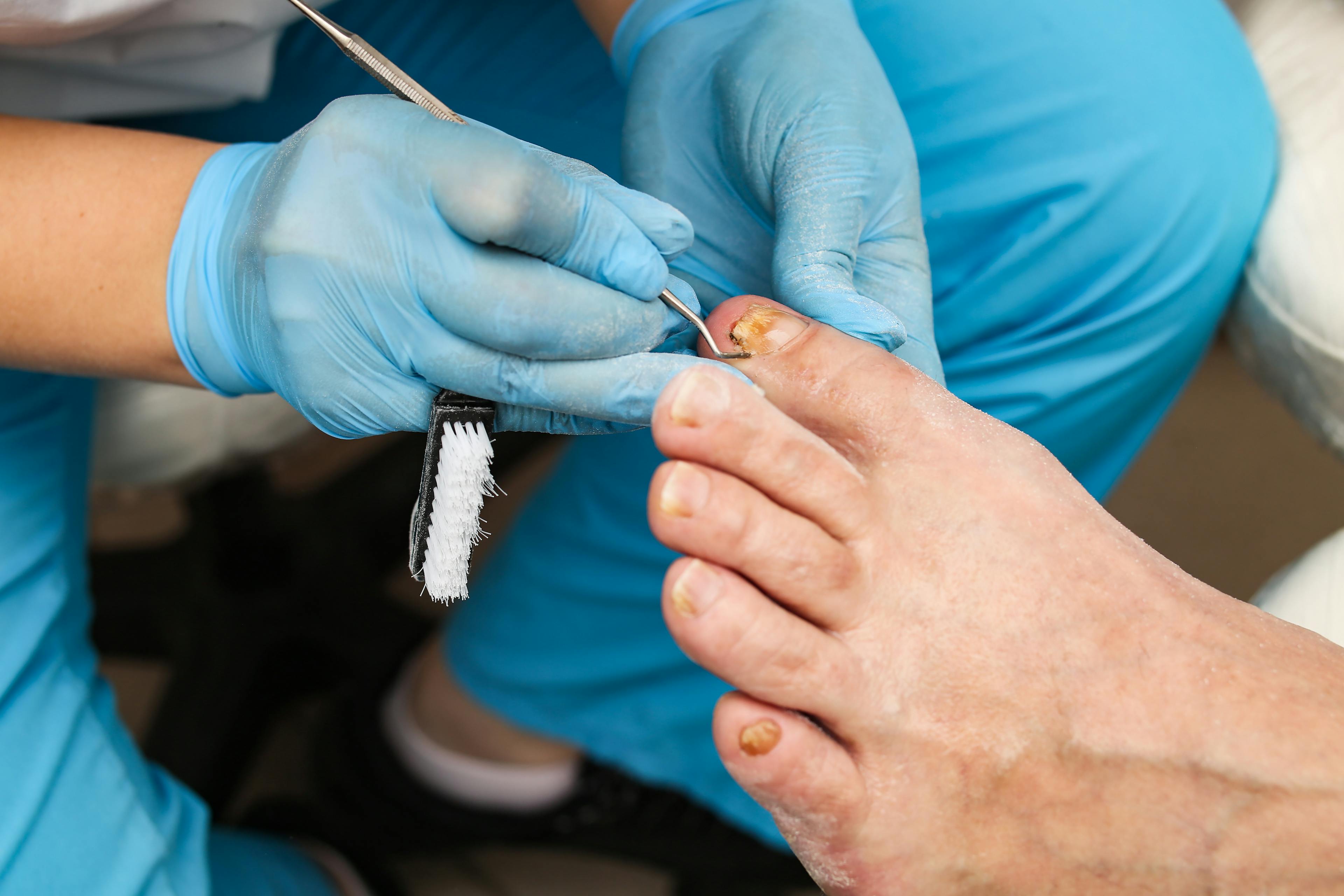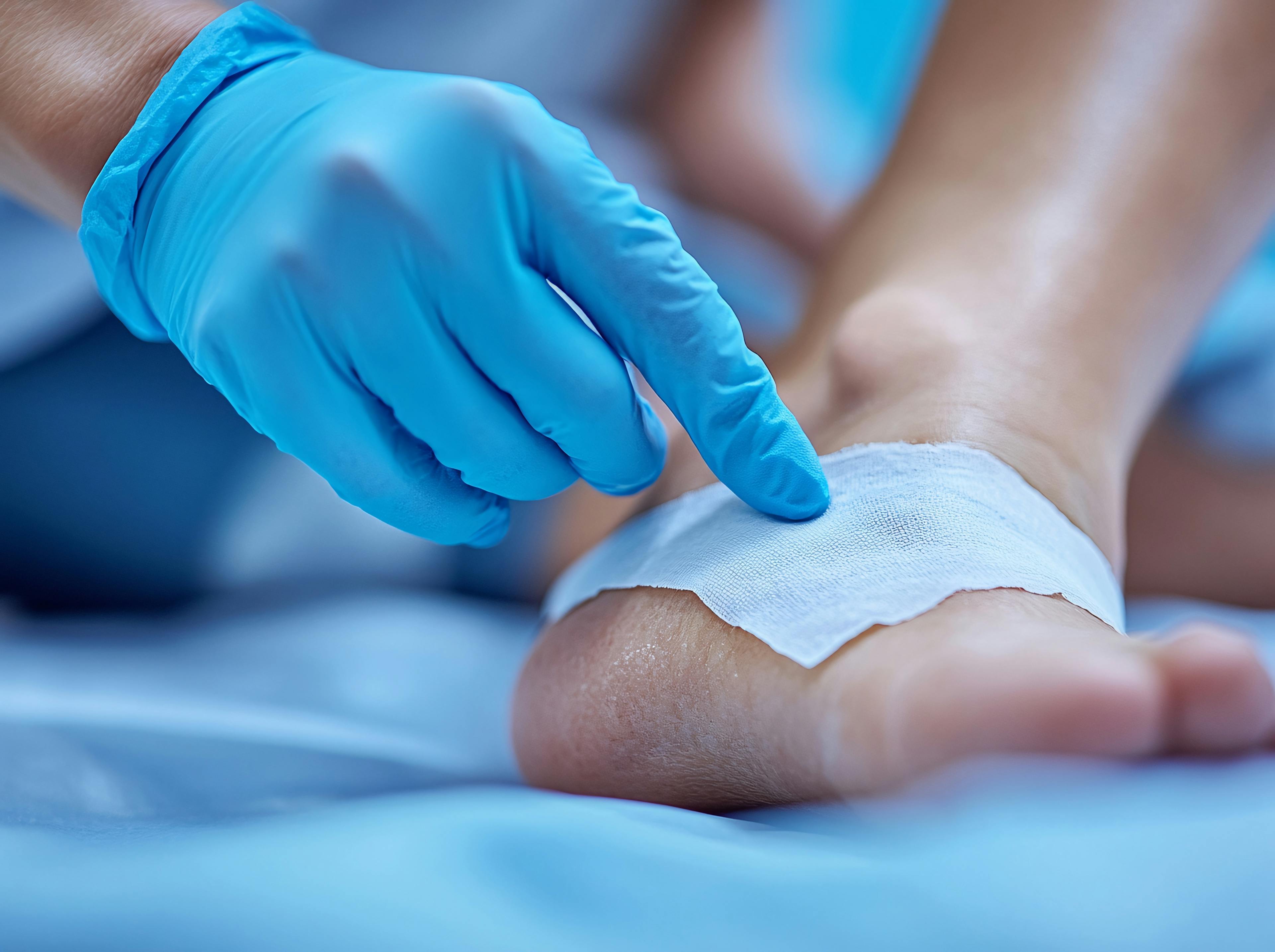A heel spur is a bony growth that develops on the heel bone (calcaneus), often due to long-term stress on the foot. These growths form as a result of the body’s response to mechanical stress where soft tissue connects to bone.
The body creates new bone tissue to replace the damaged tissues – like a bony scar. Heel spurs are often present where the plantar fascia and the Achilles tendon connect to the heel.
While some people with heel spurs experience no symptoms, others may develop chronic pain, especially when inflammation is present. If you suspect you may have a heel spur, understanding the causes, symptoms, and treatment options will help you manage discomfort and prevent further complications.
Understanding Heel Spurs
Not all cases of heel spurs cause pain, but when symptoms arise, they are often linked to plantar fasciitis, a condition that involves inflammation of the plantar fascia.
The plantar fascia is a thick band of tissue that runs along the bottom of the foot, connecting the heel bone to the toes. When it becomes inflamed or overstretched, it can contribute to the formation of a heel spur, worsening heel pain, and stiffness in the affected foot.

Heel Spur Symptoms
Pain from a heel spur can range from mild discomfort to sharp, stabbing sensations that make walking difficult. Individuals with this condition may experience:
- Sharp, piercing pain, often described as a pin or knife-like sensation, when taking the first steps in the morning.
- A dull, persistent ache that develops as the day progresses, especially after prolonged activity.
- Increased discomfort after standing or sitting for extended periods, with pain that may temporarily subside with movement but return after rest.
- An enlarging prominence at the back of the heel bone where the Achilles tendon inserts.
Causes and Risk Factors
The development of heel spurs results from long-term stress and strain on foot muscles and ligaments. Key risk factors include:
- Abnormal walking gaits that place exerts excessive stress on the heel and surrounding tissues.
- Tight leg muscles, particularly the gastrocnemius muscle in the calf.
- Running or jogging, particularly on hard surfaces.
- Poorly fitted or worn-out shoes lacking adequate arch support.
- Excess body weight, which adds more strain on the foot.
Heel Spurs and Plantar Fasciitis: The Connection
Plantar fasciitis involves inflammation of the plantar fascia secondary to soft tissue damage, whereas heel spurs are the body’s response to stress on the bone where the plantar fascia attaches to the bone. Both conditions are typically connected through their causes and the area of the foot they affect.
Diagnosing Heel Spurs
The diagnosis of heel spurs is confirmed through clinical examination and imaging techniques such as X-rays, which reveal the characteristic bony protrusion. Your doctor might also assess any related conditions like plantar fasciitis and Achilles tendinitis during the diagnosis.
Common Treatment Approaches
Non-Surgical Approaches
Most cases of heel spurs can be effectively managed without surgery. Treatment options include:
- Physical therapy to strengthen and stretch the foot and lower leg muscles.
- Orthotic devices, such as custom-made insoles and heel pads, to distribute pressure away from the spur.
- Anti-inflammatory medications to reduce pain and swelling.
- Icing to reduce inflammation.
- Corticosteroid injections to reduce inflammation and to break up scar tissue.
- Night splints to help with calf tightness.
- In severe cases, boot immobilization may be recommended to rest the foot.
When Surgical Intervention is Considered
Surgery may be considered if conservative treatments fail to alleviate pain or if the heel spur interferes significantly with your mobility. Procedures may involve the removal of the spur or release of the plantar fascia.
Prevention Tips
Preventive measures can significantly reduce the risk of developing heel spurs. Proactive steps you can take:
- Prioritize wearing well-fitted shoes with proper arch support and cushioning.
- Warm up and stretch before engaging in rigorous physical activities.
Maintain a healthy weight to reduce stress on the feet. This will lower the risk of inflammation, which often contributes to swelling in the foot and ankle.
FAQs
These bony growths form from repetitive stress and strain on the heel bone and its surrounding structures, often due to physical activities and unsupportive footwear, leading to calcium bone deposits over time.
While heel spurs are permanent growths that do not dissolve on their own, the pain associated with them can often be managed effectively with appropriate treatments.
Heel spurs are bony protrusions on the heel bone, whereas plantar fasciitis involves inflammation of the connective tissue across the bottom of the foot. Although linked by similar causes, they are distinct conditions.
Recovery from heel spur surgery typically takes 6 to 12 weeks for initial healing, during which mobility may be limited. Most patients resume light activities within 2 to 4 weeks, but full recovery, including the ability to return to high-impact activities, can take 3 to 6 months depending on the extent of the surgery and individual healing factors. Physical therapy and proper post-operative care are essential for regaining strength and preventing complications.





